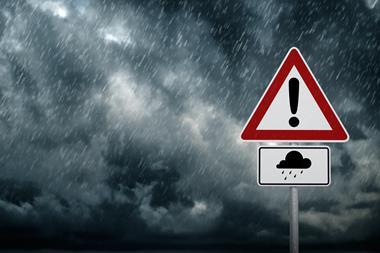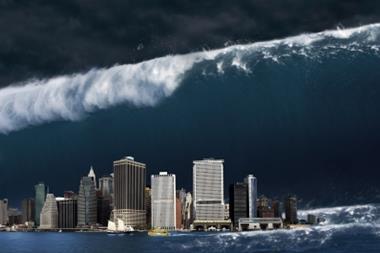Seventeen new cat bonds were issued during the first 11 months of 2006, adding just over $3.5 bn to the property cat capacity provided by the capital markets.
Despite the comparatively benign year to date for natural catastrophes, in mid-November Catlin Group agreed a catastrophe swap, which will pay up to $200 million in the event that more than three severe natural catastrophes occur over a three year period.
The deal covers US hurricanes, Californian earthquakes, New Madrid (US Midwest) earthquakes, UK windstorms, European (excluding UK) windstorms, Japanese typhoons and Japanese earthquakes. Triggers for the US events are aggregate industry losses and specified parametric criteria elsewhere.
Catlin Bermuda purchased the swap from a special purpose vehicle, Bay Haven Limited which in turn issued $200 million in three year floating rate notes to investors. The proceeds of these notes comprise the collateral for Bay Haven's obligations to Catlin. Standard & Poor's has given the senior element of the transaction, technically a collateralised debt obligation, a rating of AA, the highest a cat bond type product has achieved.
Stephen Catlin, chief executive of Catlin Group, said: "The pattern of natural catastrophes over the past several years has focused attention on how insurers and reinsurers will be able to respond to the increasing frequency and economic severity of these events. This transaction will strengthen Catlin's ability to withstand claims arising from a series of severe natural catastrophes."
Guy Carpenter & Company and its affiliate MMC Securities advised Catlin on the transaction, which was arranged and structured by ABN Amro. Risk Management Solutions (RMS) provided the stochastic risk analyses, definitions of covered events and parametric trigger solutions.
Outside the property catastrophe sphere, AXA issued $442 million in asset backed securities to cover a catastrophic increase in mortality across its three major markets, France, Japan and the United States, over a risk period of four years to 31 December 2009. Swiss Re arranged the transaction and placed the notes along with IXIS CIB and Lehman Bros. Notes were issued by a Dublin based special purpose vehicle, Osiris Capital Plc.
The transaction has been segmented into four tranches, according to the probability of the trigger, based on a multi-country index of official mortality figures. The base layer of $100 million will pay if excess mortality is between 106 and 110% of normal over any two consecutive calendar years within the risk period. Given the size of AXA's life portfolio, only a very large event, such as an influenza pandemic, could put the bonds at risk.
The top tranche will apply in the very remote probability that excess mortality reaches 114%. Of this top layer of 150 million euros in total, financial guarantee company CIFG Europe has acted as guarantor for 100 million euros of notes, which have the maximum credit rating of AAA/Aaa and a low price of 20 basis points over 3 month Euribor.
According to Swiss Re, the transaction attracted considerable investor demand and was largely over-subscribed across the classes. For AXA, which in 2005 issued 200 million euros notes to create quota-share cover for its motor portfolio, the securitisation diversifies its source of cover and optimises its risk management.


















